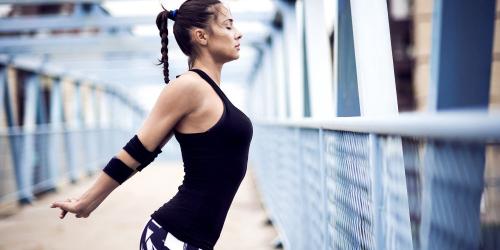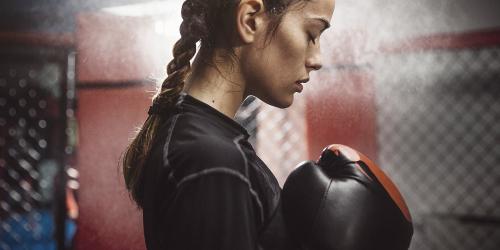Sports and vacations: in the water, stand up paddle
The principle of stand up paddle:
As its name indicates, the "SUP" consists of rowing standing on a board, equipped with a paddle. Arrival of the United States, this new vogue breaks on the French coasts , in particular on the beaches of the Atlantic. The reasons for its success? The dimensions of the board (long and wide) facilitate the balance, the position avoids back pain, learning is fast (unlike surfing, much more technical), so it's motivating. Very quickly, one manages to move on the water, and one thus has an unprecedented view on the shore and the seabed (for those who have the chance to be on a transparent sea, like the Mediterranean). Bonus: we discover inaccessible places from the ground (creeks, hidden miniplages, etc.). Long live freedom !
What to practice stand up paddle?
Hyper complete, the SUP firm the buttocks , thighs, abs, arms , and sheath the back muscles look like anything. But beware of sunburn (we do not see the time pass): provide good sunscreen and a T-shirt. In case of overcast skies or frizzy seas (those who spend their holidays on the English Channel will recognize themselves), a light neoprene wetsuit allows you to isolate yourself from the cold.
Stand up paddling, who is it for?
The frustrated windsurfers who have struggled (in vain) for years and have always dreamed of parading on the water. With SUP, no risk of being ridiculed, it's really very simple (promised). For a first approach, better a calm sea or a flat water. Once the basics are mastered, everyone does what they like: simple "hike" (be careful, it's sportier than it looks, do not assume your strength by getting too far from the coast ) or attempt to slips on the waves to play it Hawaiian surfer (the oar helps to find its balance). In any case, one quickly becomes addicted to one's board.
The stand up paddle in practice:
To begin, it is better to take one or two courses. With a little luck, you will come across a sexy teacher, Alert atmosphere in Malibu. Inquire at the nearest sailing club or surf shop. Info on www.surfingfrance.com , heading "Stand Up Paddle".
Sport and holidays: on the sand, the plumfoot
The principle of plumfoot:
A mix between badminton (for the steering wheel), football (for the gesture) and volleyball (for the net). Explanations: At the base, this Asian sport (which is also called Da Cau) is played only with the feet. It involves "tapping" into a steering wheel and sending it over the net to the opposing team, which must send it back with the feet before it touches the ground. Needless to say, for beach naiads, it's not won! For ease of play, the rules have been relaxed: you can use any part of the body (knees, shoulders, thighs, forearms , etc.), except the hands .
What to practice plumfoot?
Above all to share laughter with friends. Above all, do not take yourself seriously : it's not a question of counting the points scrupulously as the French Federation of Plumfoot recommends (it exists!), But to spend a maximum while trying to pass the wheel of the other side of the net. The precision ? Leave it to the professionals ... In addition to its good-natured side, the Plumfoot develops coordination skills, sharpens reflexes and improves the flexibility needed for "leg lifts". The most sporty will have fun doing acrobatics to launch the wheel with style. Most ? We progress very quickly ... the calories fly away and we lose weight without being noticed .
The plumfoot, for whom?
The energetic ones! Those who hate staying glued to their stomachs on their napkins, who are bored on the beach after ten minutes , the queens of the organization able to gather volunteers for a frenzied party ... Adepts of the "zero effort summer" refrain themselves.
The plumfoot in practice:
If you want to have a chance to hold (more than a minute), it is better to have a breath and avoid the hot hours (between noon and 4 pm). Too many people on the beach, afraid of looks? Plumfoot can also be played in a garden, when it is possible to plant a net. Info on www.plumfoot.net
Sports and holidays: on the track, big dance
The principle of big dance:
A program of "sports lounge dances" created by two world champions of gymnastics. In practice, it's a kind of aerobics version 2012 , which combines fitness moves with steps of samba, salsa, cha-cha-cha, rumba, tango, rock, merengue ... At first, the sequences are quite simple then the rhythm accelerates and the choreography is complicated . The session ends with ten minutes of stretching. Verdict? Exhausting but addictive.
Why practice big dance?
Learn to waving, swinging, swirling, "groover", in short move your body with ease. But also develop endurance, resistance, improve memory (remember each sequence) and acquire a posture that "lengthens" the body. Side muscles, the Big Dance is mostly work the legs and buttocks , to show a sexy camber in devil.
Big dance, for whom?
Those who stay in town and want to twirl to the end of the night, the timid fireball, the tired of the traditional fitness who want to spend otherwise, and all those who want to develop their sensuality. In the end, we get rid of his complexes in a good mood (the course is not a competition) and we come out with a smile.
The big dance in practice:
Big Dance classes at Daily Move clubs ( www.dailymove.fr ) and Vit'Halles ( www.vithalles.fr ). Subscription from € 19.95 per month (access to all courses and equipment).
Sports and holidays: in the woods, the tonus
The principle of fit tonus:
A "classic" physical training (running, step, pumps, etc.), but surrounded by nature, supervised by a coach, with a very flexible organization (all you have to do is register on the Internet and book the schedule and the place ). An ideal formula to fill up with chlorophyll during the summer (the courses are offered in parks), or when you're on vacation in the province, we do not know anyone and we want to do a sports session in outside (many courses are organized in forests or green spaces surrounding major cities, such as Lyon, Nantes, Lille or Caen).
For what do you practice tonus?
A typical session lasts one hour, with about ten participants. Those who thought to wander vaguely in the woods stopping every ten meters will pass their turn: the program, very structured, was devised by Jessica Mellet, French champion of fitness. We start with a warm-up phase, then we go on with cardio exercises, bodybuilding, a quarter of an hour of running "in progress" (not hunted, sprint, etc.), some stretching, and finally fifteen minutes of relaxation in the grass. The whole body is solicited, we sweat and we take a breath of fresh air: it feels good! The good point: courses adapted according to the level and objectives of each, to be in phase with the group and not to finish breathless, the goal is also to learn to regulate his breathing.
The fit tonus, for whom?
No room, no mirror, no music. Those who hate to put pressure (especially on vacation) will be delighted, and it's a great way to enjoy sunny days, for example by alternating an indoor session with a course outdoors, just to put your nose out and to oxygenate the mind. For young moms, "Fit Poussette" sessions (gym with baby in stroller, like New Yorkers) are available everywhere in France.
The fit tonus in practice:
Rates: 12 € the course, 60 € the book of five courses. Info and registration on www.fitness-pleinair.fr .


